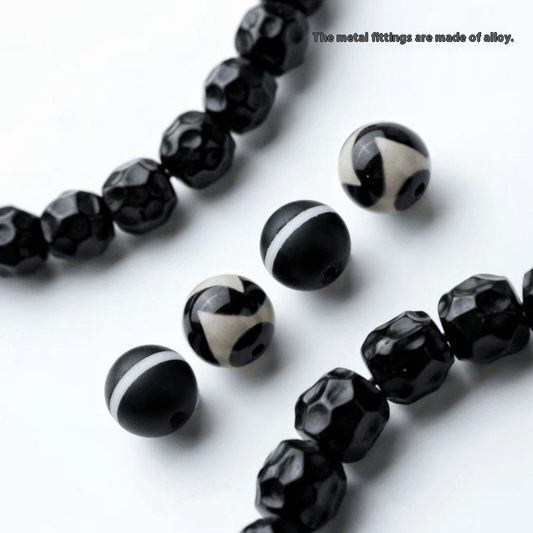
Amid the sophisticated tapestry amidst Tibetan religious beliefs are found two profound relics: the elaborated thangka and crafted bodhi seed. Every single one, in individualized approach, enables transcendental awakening. The thangka, a colorful canvas, shows holy beings, mystical shapes, or doctrinal episodes, providing insight for inner reflection.
By comparison, the bodhi bead, often crafted from exquisite rocks, planks, berries, or osseous tissue, is a tangible reminder of Buddha's liberation under the bodhi tree. Holding these beads during prayer or meditation helps to focus the mind.
- Together, the thangka and the bodhi bead manifest the interconnectedness of art and spirituality. They offer a tangible link to the traditional insight of Tibetan Buddhism.
Chronicles Inscribed in Camel Ossicles
Within historic timelines, historic treasures whisper tales of a world long departed. These are not ornate objects of suppressed empires, but unassuming camel bones marked with motifs that hold the hidden truths of a bygone era. All elements preserve the echo in a life lived, a journey navigated, and a connection to the sacred wisdom containing which embraces us all.
- These fragments
- Bones
- Provide
Unlocking the Symbolism within Thangka Masterpieces
Tangkas are bright paintings on canvas, meticulously crafted by Tibetan artists to depict holy figures and scenes from Buddhist scriptures. Each detail within a thangka is laden with relevance, forming a complex tapestry of visual narratives that guide the viewer on a inner journey. The tones used in thangkas are not merely aesthetic choices but carry fundamental connotations, standing for different aspects of the Buddhist doctrine. From the peaceful figures to the intricate layouts, thangkas offer a window into the rich world of Tibetan Buddhism, inviting us to consider upon its guidance.
- Conventional thangka art often depicts key Buddhist figures such as Buddha Shakyamuni, Bodhisattvas like Avalokiteshvara and Manjushri, and enlightened beings from various movements of Tibetan Buddhism.
- Within these representations lies a wealth of insight that can be understood by those who explore the symbolic language of thangkas.
Siddhartha's Path to Enlightenment: Embodied in Beads and Bone
Upon the winding course to salvation, the Buddha used insignia imbued with profound meaning. Separate bead and object held within them the fundamentals of his instruction, disclosing glimpses into the unfolding of reality. Via their configuration, the Buddha shared profound concepts that outshine the realm of material perception.
From chosen contemplative beads, crafted from precious materials, emanated vibrations that synchronized with the refined frequencies within. The substance of a entity, meticulously transformed into amulets, served as tangible symbols of the impermanence native to all existence.
Thangkas: Windows into Himalayan Spirituality
Thangkas vivid paintings on cloth serve as dynamic representations of Himalayan spirituality. These intricate works of art, meticulously created with artful brushstrokes, depict a vast array in Buddhist deities, mandalas, and scenes from revered scriptures. Each thangka is a meditative instrument for meditation and contemplation, offering knowledge into the multifaceted teachings of Buddhism.
- They are often used in ritual ceremonies for
- reflecting states of spiritual enlightenment.
- Thangkas act as not merely decorative pieces but rather doorways into the rich and compelling world of Himalayan spiritual traditions.
The Allure of Bodhi Beads: Exploring Mindfulness and Compassion
Each pearl on a bodhi bead mala whispers tales of ancient wisdom, guiding us on a passage through the tranquil waters of mindfulness. As we clutch these intricately created beads, our fingers trace the contours of distinct one, anchoring our cognition in the present moment. The gentle mass of the beads against our palms serves as a tangible reminder to take a breath, fostering a sense of calm.
- Every time bead that passes between our fingers, we promote compassion, extending it first to ourselves and then outward to the world.
- Eastern religions teaches us that mindfulness is a practice that requires patience and perseverance.
Using the rhythmic repetition of mantra or simply the mindful tallying of the beads, we disengage from the relentless chatter of the mind.
The practice making use of bodhi beads is a elegant invitation to rekindle our connection with ourselves and the world around us.
Soulful Creation: Camel Bone Bracelets Enhancing Spiritual Progress
Intent embodies an inherent energy in our lives, shaping our experiences and guiding us towards our ultimate purpose. When we combine this intention with the traditional practices of crafting a camel bone bracelet, we create a potent synergy that can propel our spiritual growth.Camel bone exudes mystical power, representing stamina. Its natural beauty and enduring grace serve as a constant reminder of the vibrant energy within each of us.While choosing every element, inject meaningful wishes. With every knot or fastening, we interlace our hopes, dreams, and aspirations for spiritual evolution. This act of creation becomes a powerful affirmation, aligning us with our inner wisdom and guiding us on a road to insight.- Draw inspiration from the bone’s inherent patterns.
- Picture your goals interlaced in the bracelet’s form.
- Wear it as a constant reminder of your commitment to growth and transformation.
Exploring Camel Bone as a Buddhist Symbol
In the rich tapestry encircling Buddhist tradition, artifacts often hold profound symbolic meaning. Within these varied objects, camel bone stands out as a unique and intriguing element. Within history, this material has been integrated in the crafting in various Buddhist tools, each imbued with specific significances.
- Seen as a symbol of resilience and strength due to the camel's ability to withstand in harsh environments, camel bone often reflects spiritual fortitude.
- Likewise, the color and texture against camel bone are believed as some to hold auspicious connotations, signifying purity and serenity.
As a result, camel bone has become a treasured part of Buddhist culture, serving as a tangible link to the profound teachings of this ancient faith.
Thangka Art: Weaving Tales of Divinity
Within the ethereal realm of Tibetan Buddhism, Thangka paintings emerge as sacred portals to enlightenment. These captivating works, meticulously crafted by skilled artists known as thangkapa, depict a myriad embracing vibrant deities, celestial beings, and mythical creatures. Each brushstroke saturates profound spiritual significance, narrating ancient tales and philosophical notions.
- Showcasing a vast group of Buddhist iconography, Thangkas serve as both devotional objects and instructional tools. Zealous practitioners gaze upon these paintings during rituals and meditations, seeking to achieve spiritual wisdom.
- Ornately decorated with intricate details decorated with numerous vibrant hues, Thangkas are considered windows into the divine. All painting acts as a symbolic representation of the Bodhisattva's teachings and the path to liberation.
By the use of their compelling imagery and symbolism, Thangka paintings offer a glimpse into the rich theological traditions of Tibet. They are a testament to the enduring elegance of Tibetan art and its profound ability to empower.
Embracing the Duality: Thangkas and the Cycle of Life and Death
Thangkas, radiant pictorial scrolls from Tibetan culture, embody a meaningful examination of life’s transience. Each intricate depiction depicts deities and beings engaged in the continuous course of life and death, a assemblage of birth, growth, impermanence, and renewal. The artists skillfully intertwine these concepts within the thangka's sphere, highlighting the linkage of all things. Fengshui Through vivid illustrations, they invite us to meditate on our own being. The cycle moves, a sequence of coming and going, pointing out the preciousness of each moment. By embracing this duality, thangkas teach us to respect the beauty in both life's joys and sorrows.String of Mindfulness: The Significance of Bracelets in Buddhist Practice
In the intricate tapestry of Buddhist practice, seemingly humble objects often hold profound meaning. Among these are bracelets, which serve as tangible representations of devotion and commitment to the way of Buddha. Worn on the wrist, a bracelet operates as a constant reminder of one's aspirations and ambitions. It can stand for the impermanence of life, motivating practitioners to remain focused in the present moment. Some bracelets may contain sacred inscriptions, such as mantras or the names of Buddhas, which are considered to attract positive energy and guard. Others are commonly made from matter with spiritual significance, like sandalwood or lotus seeds, amplifying the bracelet's impact. Ultimately, the significance of a Buddhist bracelet derives far beyond its physical form. It becomes a powerful tool for meditation, a inspiration to live in harmony with the teachings of Buddha, and a origin of one's unwavering commitment.